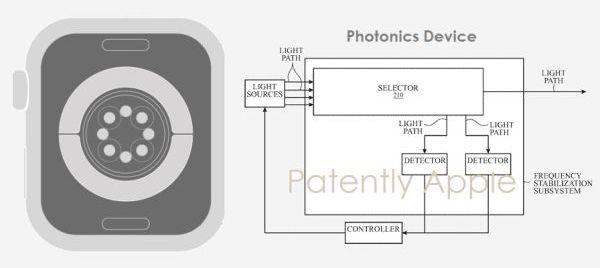Google is reportedly working on a foldable Pixel phone that will feature an ultra thin glass layer on top of the foldable display.


Scientists have been turning to the animal world for inspiration for a long time, including for medicines. And many different types of animals have been responsible for this inspiration, including sharks, spiders, and… roadkill.
Hosted by: Michael Aranda.
SciShow has a spinoff podcast! It’s called SciShow Tangents. Check it out at http://www.scishowtangents.org.
———
Support SciShow by becoming a patron on Patreon: https://www.patreon.com/scishow.
———
Huge thanks go to the following Patreon supporters for helping us keep SciShow free for everyone forever:
Chris Peters, Matt Curls, Kevin Bealer, Jeffrey Mckishen, Jacob, Christopher R Boucher, Nazara, charles george, Christoph Schwanke, Ash, Silas Emrys, KatieMarie Magnone, Eric Jensen, Adam Brainard, Piya Shedden, Alex Hackman, James Knight, GrowingViolet, Drew Hart, Sam Lutfi, Alisa Sherbow, Jason A Saslow.
———
Looking for SciShow elsewhere on the internet?
Facebook: http://www.facebook.com/scishow.
Twitter: http://www.twitter.com/scishow.
Tumblr: http://scishow.tumblr.com.
Instagram: http://instagram.com/thescishow.
———
Sources:
Intro.
https://lemelson.mit.edu/resources/otto-lilienthal.
https://www.hookandloop.com/invention-velcro-brand/
https://biomimicry.org/biomimicry-examples/#construction.
Frogs.

An acoustic tractor beam that can bend sound around an obstacle to levitate an object on the other side has been created by researchers in the UK. Dubbed SoundBender, the device combines an ultrasound transducer array with an acoustic metamaterial.
In recent years, researchers have used transducer arrays to build sonic tractor beams that can create complex acoustic holograms to manipulate objects in mid-air. Acoustic metamaterials are engineered materials with structural properties that do not usually occur naturally. They have been used to produce acoustic holograms, bend beams of sound and create static acoustic levitation devices. But the team behind the SoundBender, based at the University of Sussex, say that these technologies have key limitations.
Article by william brown, biophysicist, resonance science foundation research scientist.

In a medical first, researchers harnessed the brain waves of a paralyzed man unable to speak — and turned what he intended to say into sentences on a computer screen.
It will take years of additional research but the study, reported Wednesday, marks an important step toward one day restoring more natural communication for people who can’t talk because of injury or illness.
“Most of us take for granted how easily we communicate through speech,” said Dr. Edward Chang, a neurosurgeon at the University of California, San Francisco, who led the work. “It’s exciting to think we’re at the very beginning of a new chapter, a new field” to ease the devastation of patients who lost that ability.


Today the U.S. Patent and Trademark Office officially granted Apple a patent that relates to an integrated photonics device. Apple is working with a UK Photonics company that supplies specialized components for the smartwatch market. One medical network publication believes that Apple is working with this UK company on a blood glucose solution.
Circa 2020
What are the fundamental laws that govern our universe? How did the matter in the universe today get there? What exactly is dark matter?
The questions may be eternal, but no human scientist has an eternity to answer them.
Now, thanks to NVIDIA technology and cutting-edge AI, the more than 1000 collaborators from 26 countries working on the Belle II particle physics experiment are able to learn more about these big questions, faster.

Researchers have found evidence for an anomalous phase of matter that was predicted to exist in the 1960s. Harnessing its properties could pave the way to new technologies able to share information without energy losses. These results are reported in the journal Science Advances.
While investigating a quantum material, the researchers from the University of Cambridge who led the study observed the presence of unexpectedly fast waves of energy rippling through the material when they exposed it to short and intense laser pulses. They were able to make these observations by using a microscopic speed camera that can track small and very fast movement on a scale that is challenging with many other techniques. This technique probes the material with two light pulses: the first one disturbs it and creates waves—or oscillations—propagating outward in concentric circles, in the same way as dropping a rock into a pond; the second light pulse takes a snapshot of these waves at various times. Put together, these images allowed them to look at how these waves behave, and to understand their ‘speed limit.’
“At room temperature, these waves move at a hundredth of the speed of light, much faster than we would expect in a normal material. But when we go to higher temperatures, it is as if the pond has frozen,” explained first author Hope Bretscher, who carried out this research at Cambridge’s Cavendish Laboratory. “We don’t see these waves moving away from the rock at all. We spent a long time searching for why such bizarre behavior could occur.”
When a star is born, the leftover dust and gas in the cloud from which it formed doesn’t just sit there. It clumps together, forming other cosmic objects — asteroids and comets and meteors and, yes, exoplanets. We’ve detected many of these exoplanets in orbit around alien stars in the Milky Way.
But not all exoplanets stay put. Some get gravitationally kicked away from their parent star, to wander the galaxy, cold and alone. These are less easy to detect — but, after careful combing through data from NASA’s planet-hunting Kepler space telescope, astronomers think they’ve found some.
In data from a two-month observing period, they counted 27 signals hinting that a rogue exoplanet was moving past the telescope’s eye. Most of them were known, detected by other instruments — but five were completely new.